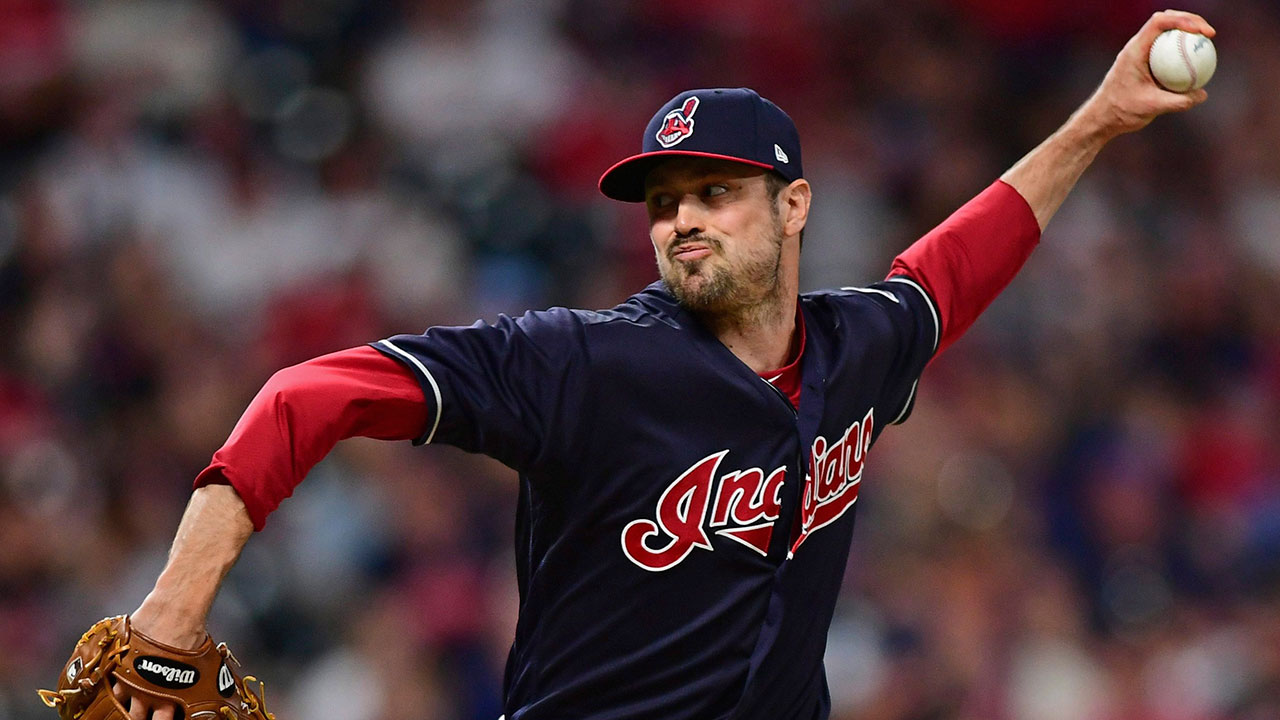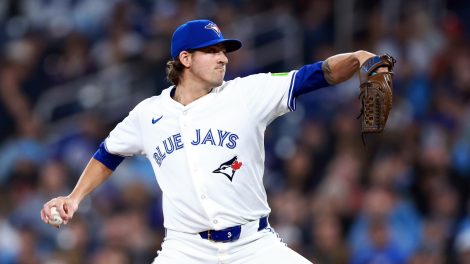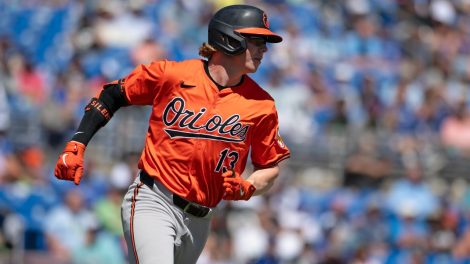For those inclined to think about baseball in February, potential rule changes are a welcome distraction from another slow-developing MLB off-season.
Whether or not you’d like to see them implemented, the ideas reportedly being discussed by MLB and the MLB Players Association are undeniably interesting. There are big potential changes under consideration, like a three-batter minimum for pitchers and a universal designated hitter, plus some smaller but equally fascinating adjustments to contemplate.
Sure beats puzzling over the apparent lack of interest in Bryce Harper and Manny Machado. Whether intentionally or not, MLB now benefits from a shift in discussion as potential changes to the game displace the lack of spending in the baseball spotlight.
Will these ideas become reality? A few appear to have some real support, but others seem more like the product of a brainstorming session: Interesting but ultimately tough to implement in reality. What follows is a closer look at some of the more intriguing potential changes, starting with the worst and working our way up to the best…
The downside of an early-July trade deadline
The sides have discussed the possibility of moving to a singular trade deadline, according to ESPN’s Jeff Passan. That much makes sense since the July 31 trade deadline isn’t really a deadline if teams can still make significant trades for a full month afterwards.
But placing the proposed deadline before the All-Star Game makes little sense. Players believe an early deadline would create off-season urgency, according to Passan, but there are better ways of incentivizing teams to spend each winter, and an early deadline would diminish a great baseball tradition of summer trades.
Think about the biggest summer deals in recent memory: Randy Johnson to the Astros, CC Sabathia to the Brewers or David Price to the Blue Jays, for example. Would those trades still happen as often if the deadline was moved up by three weeks? Even in late July, many teams still aren’t sure about their post-season chances now that there are two wild-card spots per league. Moving the deadline up would only add to that uncertainty, and as the number of clear buyers and sellers diminishes, the trade market offers fewer possibilities for big moves.
Then there’s the question of how teams would handle late-season injuries. If the deadline occurs just after the season’s halfway point, GMs will be too limited when injuries strike. Better to give teams time to determine what their playoff chances are and assess their players’ health. An all-in-one deadline in mid-August would accomplish that and allow baseball’s tradition of mid-season blockbusters to continue.
[snippet id=3966765]
Too soon to add the DH to the National League
The players are understandably interested in implementing a universal DH, according to Ken Rosenthal of the Athletic. From their perspective, this rule change would create jobs for sluggers and potentially incentivize National League teams to sign players long-term by creating spots for those who lose defensive value with age.
In fact, the players are so eager to implement this change that they’ve suggested the NL adopt the DH for 2019. Setting aside our own personal opinions about letting pitchers hit, it wouldn’t be fair to make this change so late in the off-season. Teams that completed their off-season business early would be at a disadvantage now that they’ve maxed out their budgets, and designated hitters like Nelson Cruz would have missed chances for bigger paydays.
If MLB’s going to adopt the DH across both leagues, everyone involved should have plenty of time to prepare for the change.
An attempt to solve service time manipulation
As a starting point, it’s encouraging to see the owners and players discussing possible solutions to the service time games teams play with top prospects. Along those lines, the sides are looking at ways of incentivizing wins at the MLB-level with future draft orders. These are necessary first steps, but of course it’s far easier to identify those problems than it is to find solutions for them.
The idea of awarding additional service time for performance, playoff appearances or awards first sounds like a creative way of ensuring that the best young players arrive in the major-leagues without delay.
There are a couple of issues here, though. First of all, playoff appearances are more a measure of team success than individual achievement. Even if Vladimir Guerrero Jr. posts a .900 OPS next year, the Blue Jays aren’t making the playoffs. And connecting compensation to awards would create a conflict of interest for baseball writers, so the BBWAA might object.
Alongside those issues, there’s an even bigger reason I don’t see this happening. Owners effectively get seven years of control of top young players under the current system. Why would the MLB executives negotiating on owners’ behalf give that up without getting a significant concession in return?
Three-batter minimum an intriguing possibility
Concerned that the pace of play suffers when managers make one late-game pitching change after another, MLB has interest in introducing a three-batter minimum for pitchers. The rule would apply at all times except when a pitcher finishes an inning or gets injured, according to Passan, and appears to have some support from players, according to Joel Sherman of the New York Post.
Of all the proposed changes, this one seems most likely to gain traction, and while it might appear disruptive at first, would the casual fan even notice? Would anyone miss the one-batter relief appearances that slow the flow of the game? Honestly, I don’t think so.
Granted, the one-out lefty would no longer exist, but there will still be demand for matchup lefties who can neutralize left-right-left sequences like Anthony Rizzo-Javy Baez-Kyle Schwarber or Freddie Freeman-Ronald Acuna Jr.-Nick Markakis. Plus, as incrementally more hitters gain the platoon advantage, we could see more balls in play.
The ‘opener’ would still be possible if this rule becomes official, and teams would still make lots of pitching changes — they would just be less obvious. If this goes well in the minors in 2019, we could see this rule at the MLB level as soon as 2020.
[relatedlinks]
More access for broadcasts? Make it happen
Give the players credit for this one: According to Sherman, the MLBPA offered to mic players and dugouts ‘much more.’ This is one of my favourite ideas, and I think it has all kinds of potential.
Right now, we often think of ‘action’ as what happens after the ball’s put in play. The increase of strikeouts, walks and home runs leads some to lament that nothing happens in baseball. In reality, though, there’s lots happening if you know where to look or listen. You have catchers giving pitchers pep talks, managers telling pinch hitters to get ready and coaches dispensing information on the opposition. For decades, this action has taken place out of sight — or at least out of earshot.
But imagine hearing Marcus Stroman make the case to Pete Walker that he’s good for another inning or listening in as Vladimir Guerrero Jr. jokes around with Bo Bichette after a big hit. I think this would often be just as interesting as the action on the field.
Many of these conversations would have to remain private, of course, and others could only air after a delay, but broadcasts would be more compelling if even a few conversations per game became public. They’re taking place already. Let fans see them and appreciate all that actually happens in the course of nine innings.










